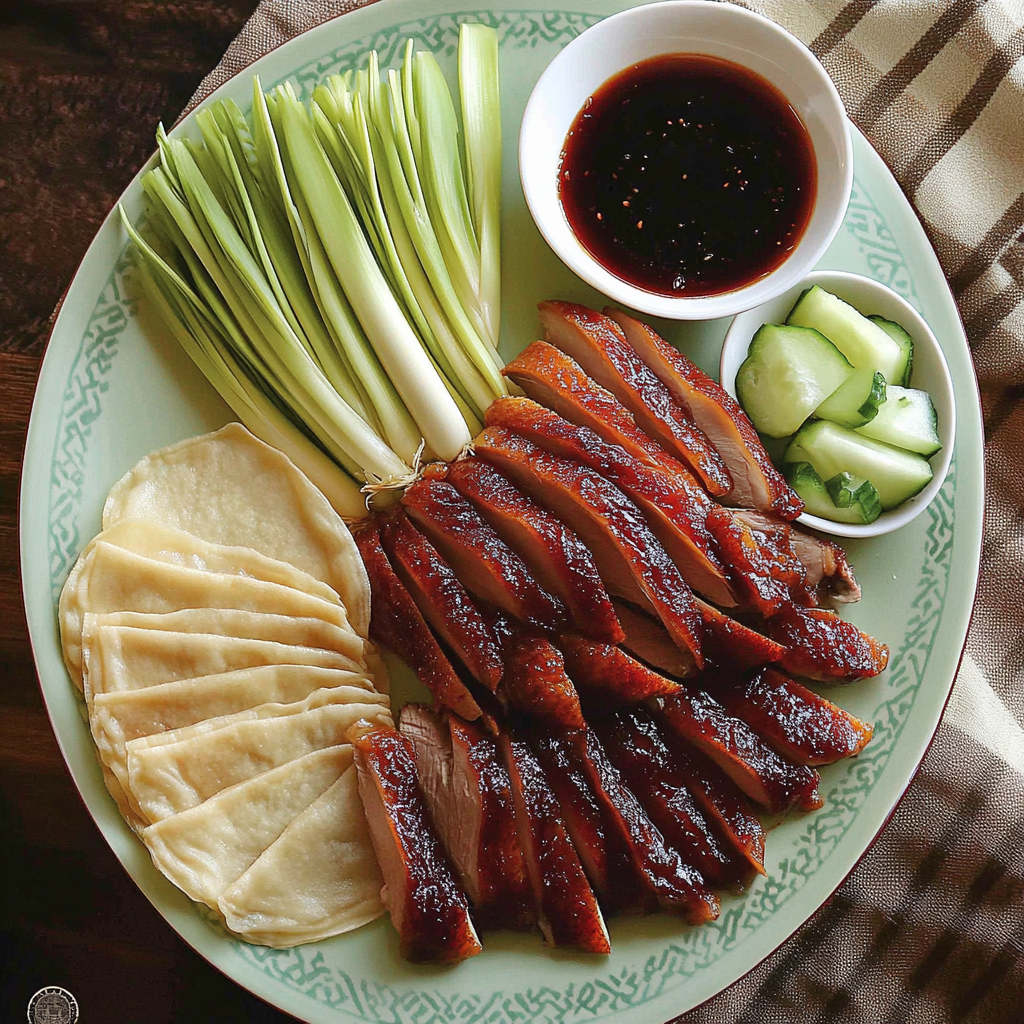
Peking Duck, An Easy Home Version (北京烤鸭)
A simplified take on the iconic Chinese delicacy, this approachable rendition of Peking Duck delivers rich flavors and crisp skin without demanding complex tools or expertise. Perfect for a satisfying homemade feast.
Print
Pin
Ingredients
- 2 apples quartered
- 4 bay leaves
- 1 head garlic
- 2 stalks scallions
- 1 duck approximately 2.5 kg / 5.5 lb
- 2 tablespoons fine salt
- 4 star anise
- 2 pieces cassia cinnamon
- For the syrup
- 2 tablespoons maltose
- 1 teaspoon vinegar
- 120 ml hot water about ½ cup
- For the sauce
- 3 tablespoons sweet bean sauce Tian Mian Jiang/甜面酱
- 1 teaspoon sugar
- For serving
- Cucumber peeled, seeds removed, cut into sticks
- Scallions julienned
- Peking duck pancakes homemade or store-bought
Instructions
- Pat the duck thoroughly dry with kitchen paper, then evenly distribute the salt over its surface and inside the cavity. Position the bird breast side up on a wire rack over a tray and allow it to rest at room temperature for 1 hour.
- Bring approximately 1½ litres (6 cups) of water to a boil and pour it gently over the entire duck, flipping to cover both sides. Remove any visible feather stubs using tweezers.
- Dissolve maltose completely in hot water along with vinegar. Brush a layer over the duck's skin and chill uncovered in the refrigerator for 1 hour. Apply a second coat and refrigerate again, uncovered, for 24 to 48 hours.
- Remove the duck from the refrigerator 1 hour before roasting to reach room temperature. Insert the scallions, garlic, apples, star anise, cassia cinnamon, and bay leaves into the cavity. Seal both ends with toothpicks or skewers.
- Preheat a fan oven to 200°C/390°F (220°C/425°F for conventional ovens). Place the duck on the center rack breast side up, with a roasting tray below to catch dripping fat. Roast for 15 minutes.
- Reduce the oven temperature to 180°C/350°F (200°C/390°F for conventional ovens). Shield the wingtips and leg ends with foil and continue roasting for about 60 more minutes.
- Confirm doneness with a meat thermometer inserted into the inner thigh near the breast—the internal temperature should be at least 74°C/165°F.
- Allow the duck to rest outside the oven for 15 minutes.
- Meanwhile, combine ½ tablespoon of the rendered duck fat with sweet bean sauce and sugar in a small pan. Simmer on low heat until small bubbles form, then transfer to a dish and whisk until emulsified.
- Warm the pancakes by steaming them for 3 minutes. Carve the duck into slices.
- To serve, spread a bit of sauce on a pancake, add duck slices, scallion strips, and cucumber. Roll and enjoy immediately.
Notes
Maltose (麦芽糖) is ideal; if unavailable, substitute with a blend of 2 parts honey to 1 part hot water.
Any vinegar will suffice, or substitute with fresh lemon juice.
Alternatives to sweet bean sauce include hoisin, yellow soybean, or plum sauce.
Monitor the duck during roasting; adjust the timing based on your oven's performance and the duck’s size.